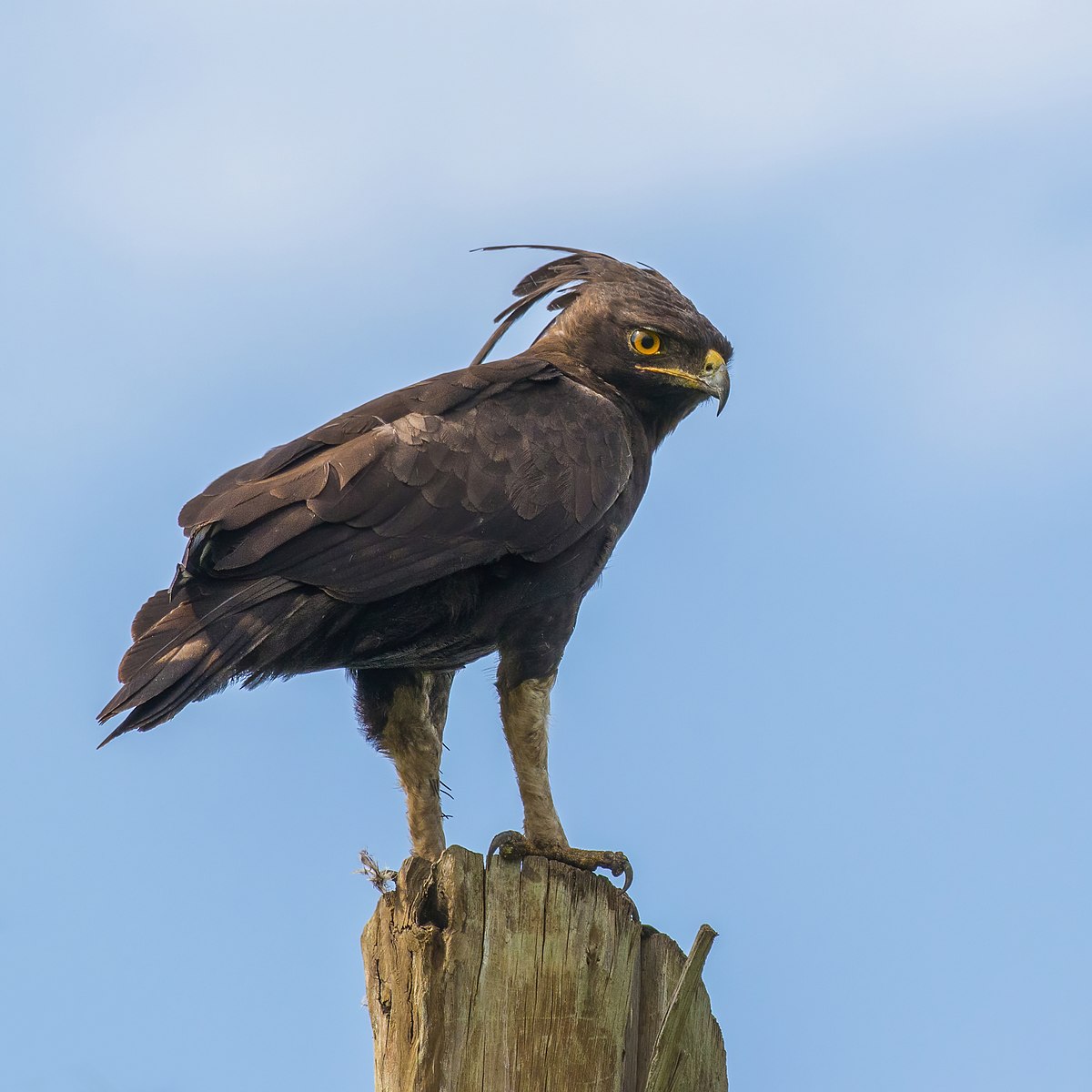The Crested Eagle (Morphnus guianensis) is a large, rare eagle species found in mature lowland and foothill forests across much of Central and South America. It is known for its impressive size, with adult light morphs being dark gray above and whitish below, featuring a gray head and breast, barred belly, and a slender shape.
The Impressive Size of the Crested Eagle
Adult Crested Eagles can reach a total length of up to 84 cm (33.1 inches) and a wingspan of approximately 170-190 cm (66.9-74.8 inches). This makes them one of the largest eagle species in their range.
Detailed Measurements of the Crested Eagle
While specific data on wing chord length and other body measurements are not readily available, we can provide the following details on the size of the Crested Eagle:
| Measurement | Range |
|---|---|
| Total Length | Up to 84 cm (33.1 inches) |
| Wingspan | Approximately 170-190 cm (66.9-74.8 inches) |
| Weight | No reliable data available |
It’s important to note that the Crested Eagle is not to be confused with the Changeable Hawk-Eagle or the Long-crested Eagle, two other large eagle species with distinct characteristics and habitats.
Appearance and Plumage Variations
 Image source: Long-crested eagle By Charles J. Sharp
Image source: Long-crested eagle By Charles J. Sharp
The Crested Eagle comes in two distinct color morphs: the light morph and the dark morph. The light morph is the more common of the two, with adults being dark gray above and whitish below, featuring a gray head and breast, barred belly, and a slender shape.
The dark morph, on the other hand, is extremely rare and is dark gray overall with white barring on the belly. Juveniles of both morphs are mostly white with darker wings and are slightly smaller and slimmer than Harpy Eagles, which they can be confused with.
Habitat and Distribution
The Crested Eagle is found in mature lowland and foothill forests across much of Central and South America, including countries such as Mexico, Guatemala, Belize, Honduras, Nicaragua, Costa Rica, Panama, Colombia, Venezuela, Guyana, Suriname, French Guiana, Ecuador, Peru, Bolivia, and Brazil.
These eagles prefer dense, undisturbed forest habitats and are known to be elusive and difficult to observe in the wild.
Conservation Status and Threats
The Crested Eagle is classified as Near Threatened by the International Union for Conservation of Nature (IUCN) due to habitat loss and fragmentation, as well as hunting and persecution in some areas.
Deforestation, logging, and the expansion of agriculture and human settlements have all contributed to the decline of the Crested Eagle’s population. Additionally, these large eagles are sometimes targeted by hunters or persecuted due to perceived threats to livestock.
Conclusion
The Crested Eagle is a truly impressive and majestic bird of prey, with its large size and striking appearance. Despite its impressive stature, this species faces significant threats to its survival, and conservation efforts are crucial to ensure its continued presence in the forests of Central and South America.
As we continue to learn more about this elusive eagle, it is important to appreciate and protect the natural habitats that it calls home.
References:
- eBird. Crested Eagle. Retrieved from https://ebird.org/species/creeag1
- Wikipedia. Changeable Hawk-Eagle. Retrieved from https://en.wikipedia.org/wiki/Changeable_hawk-eagle
- The Peregrine Fund. Long-crested Eagle. Retrieved from https://peregrinefund.org/explore-raptors-species/eagles/long-crested-eagle
- Peru Aves. Crested Eagle (Morphnus guianensis). Retrieved from https://www.peruaves.org/accipitridae/crested-eagle-morphnus-guianensis/.

